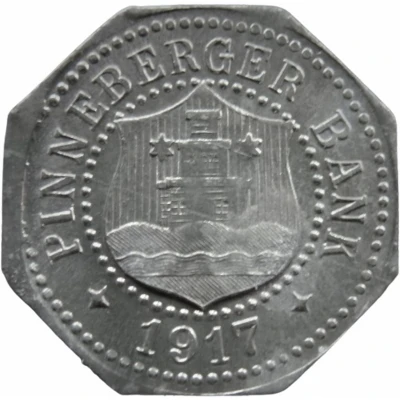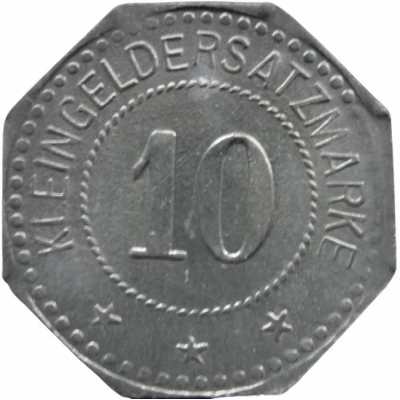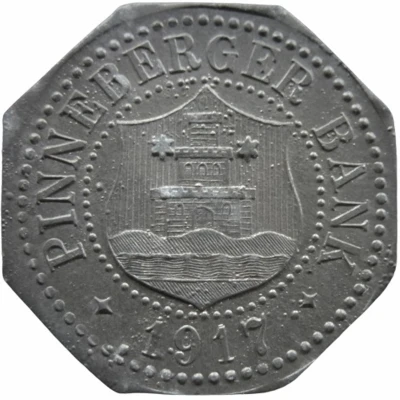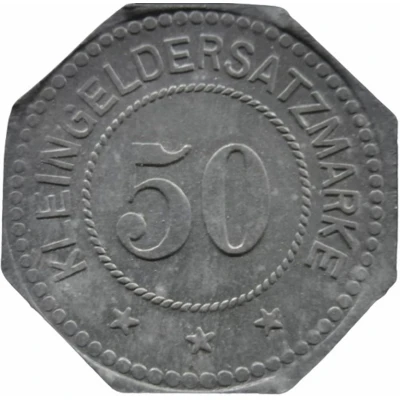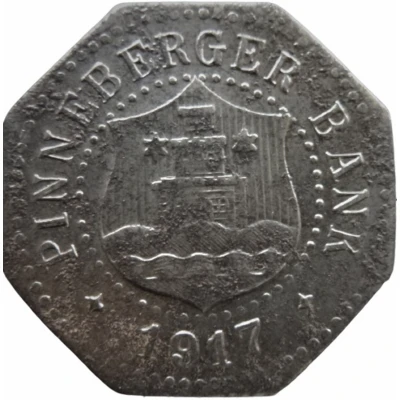
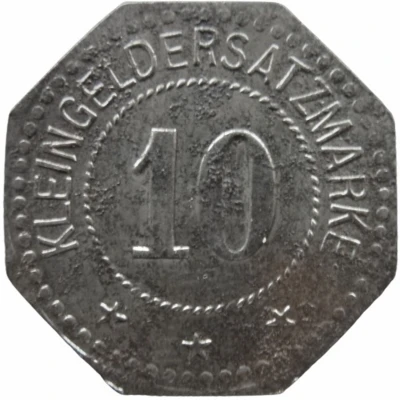

© Willem63 (CC BY-NC-SA)
10 Pfennigs - Pinneberg
1917 year| Iron | 2.5 g | 20.8 mm |
| Issuer | City of Pinneberg (Prussian province of Schleswig-Holstein) |
|---|---|
| Issuing bank | Pinneberger Bank |
| Emperor | William II (Wilhelm II) (1888-1918) |
| Type | Standard circulation coin |
| Year | 1917 |
| Value | 10 Pfennigs (10 Pfennige) (0.10) |
| Currency | Mark (1914-1924) |
| Composition | Iron |
| Weight | 2.5 g |
| Diameter | 20.8 mm |
| Thickness | 1.1 mm |
| Shape | Octagonal (8-sided) |
| Technique | Milled |
| Orientation | Medal alignment ↑↑ |
| Demonetized | Yes |
| Updated | 2024-10-04 |
| Numista | N#69734 |
|---|---|
| Rarity index | 81% |
Reverse
Pearl rim, legend surrounding rope circle with denomination centered.
Script: Latin
Lettering:
KLEINGELDERSATZMARKE
10
★ ★ ★
Edge
Plain
Comment
Issuing body: [Bank, Schleswig-Holstein].Interesting fact
One interesting fact about the 10 Pfennigs - Pinneberg 1917 coin is that it was issued during a time of economic turmoil in Germany, known as the "Inflationary Period" (1914-1923), when the value of the German mark was rapidly decreasing due to the country's involvement in World War I and the subsequent economic crisis. As a result, the government was forced to produce smaller denomination coins, such as the 10 Pfennigs, to keep up with the increasing demand for small change. Despite its small value, this coin is a unique piece of history that reflects the economic challenges faced by Germany during that time.
